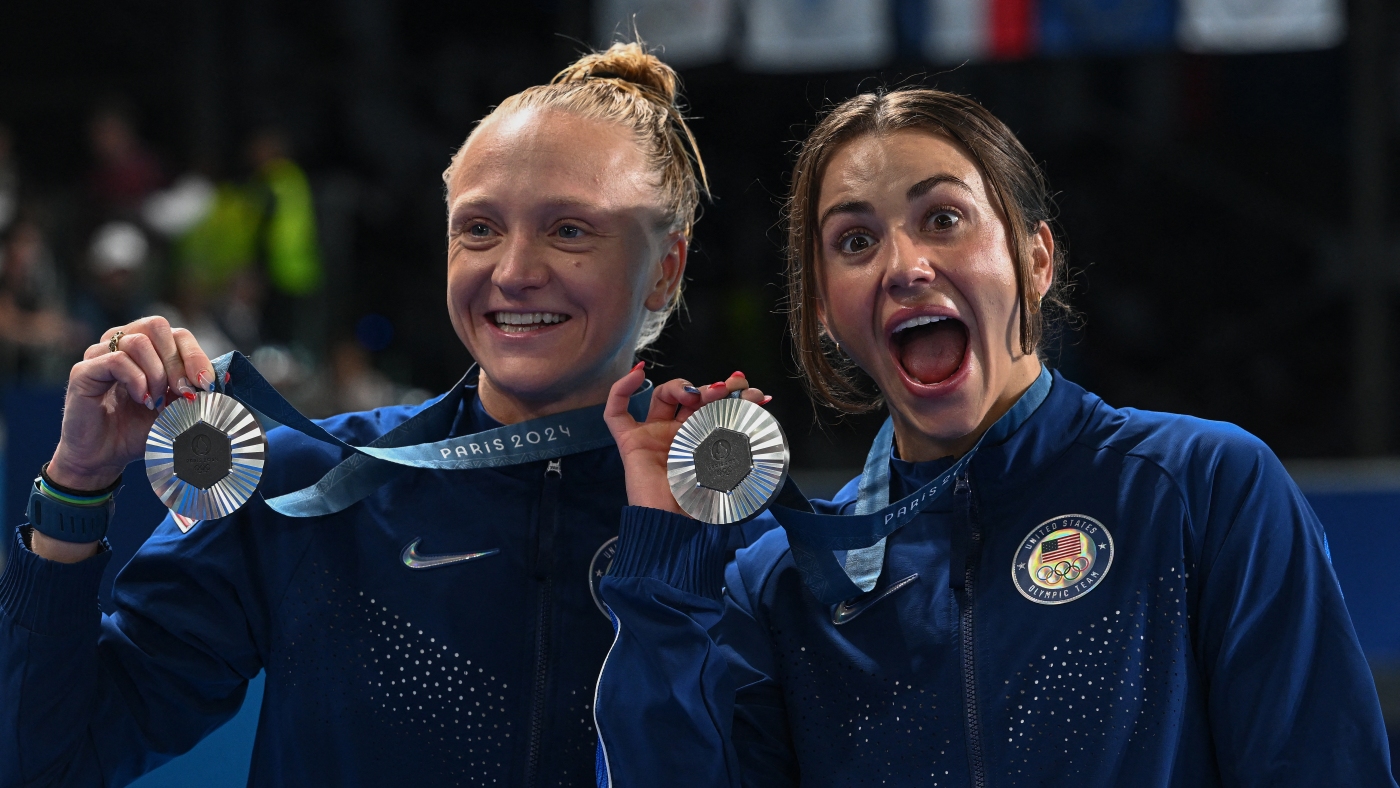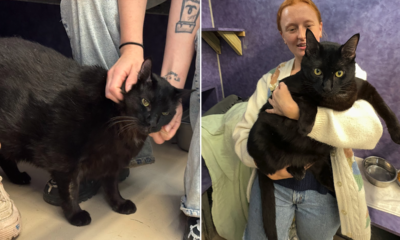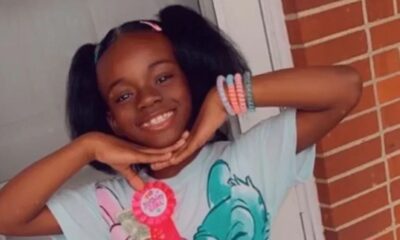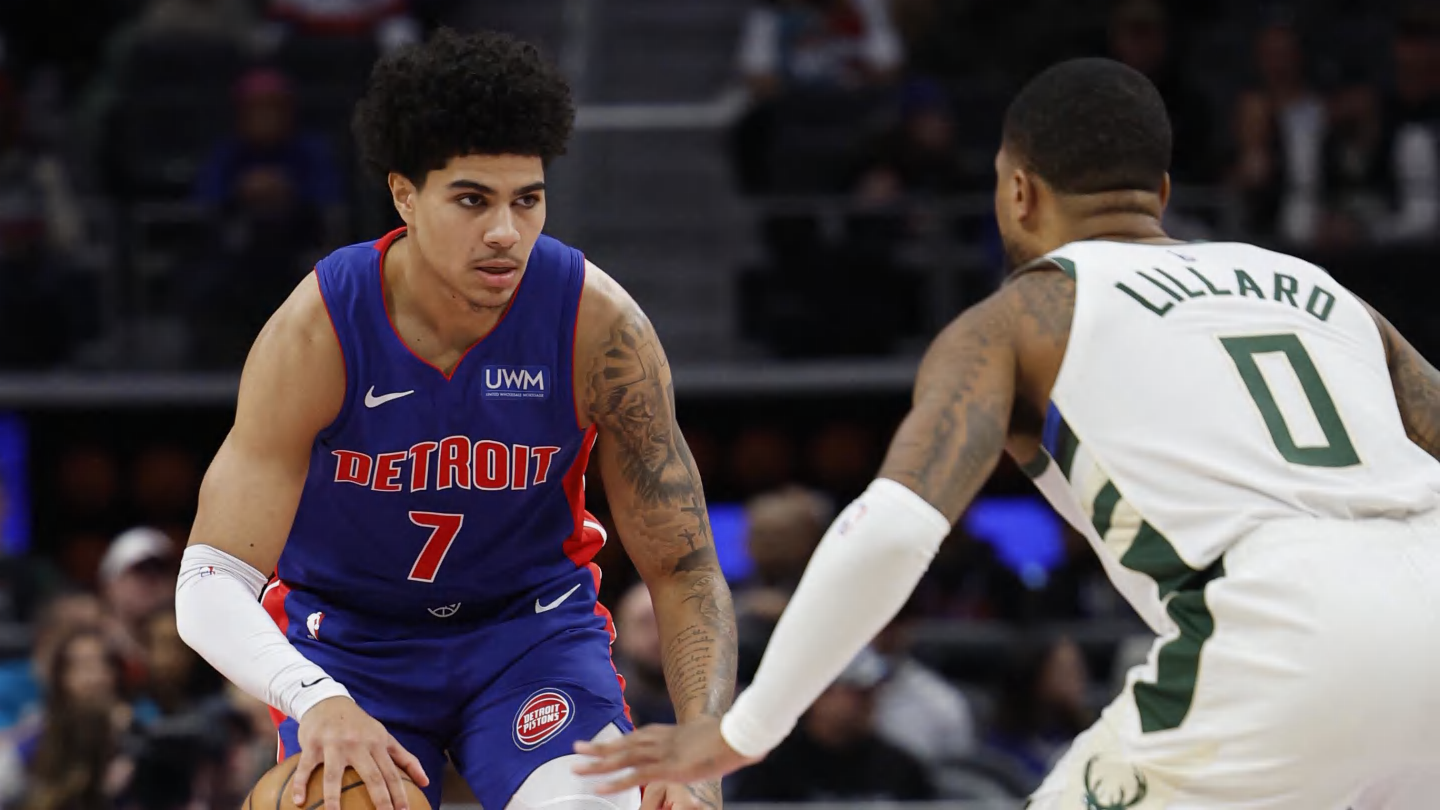Lifestyle
The top songs of the week take a nostalgia trip, courtesy of Eminem

Eminem, performing here during the Super Bowl LVI Halftime Show at SoFi Stadium in 2022, returns to the top 10 of the Billboard Hot 100 chart this week with “Houdini.”
Kevin C. Cox/Getty Images
hide caption
toggle caption
Kevin C. Cox/Getty Images
This week’s dive into the pop charts is a reminder that nostalgia is one powerful trip, from a brand-new single that explicitly references both 1982 and 2002 to a viral cover of a 2006 hit. Meanwhile, Taylor Swift still continues to reign supreme on the albums chart.
TOP SONGS
Post Malone’s “I Had Some Help,” featuring Morgan Wallen, is holding strong with a fourth week at No. 1 on the Billboard Hot 100 songs chart.
We have a new entrant at No. 2, however: rapper Eminem’s “Houdini” — which, I should hasten to note, bears no relation to vampy siren Dua Lipa’s song of the same name, released a mere seven months ago. (A whole eon ago in cultural memory, apparently.)
This “Houdini” is stuffed full of old-fashioned musical magic tricks that urge it towards success. Not only does Em reference his 2002 hit “Without Me” — “Guess who’s back, back again?” — but he interpolates Steve Miller Band’s hit “Abracadabra,” which itself went to No. 1 on the Hot 100 in September of 1982. (You know what kind of music lots of people really like? Music that they know they already really like.)
Rounding out the Billboard 100 top five: Tommy Richman’s “Million Dollar Baby,” Shaboozey’s “Tipsy (A Bar Song)” and Kendrick Lamar’s “Not Like Us.”
TOP ALBUMS
Taylor Swift continues her reign at No. 1 on the Billboard 200 albums chart, scoring a seventh week in the top spot. As Billboard notes, however, her equivalent album sales have continued to fall, notching 148,00 units this week.

It’s still enough to hold off everyone else, at least for now. As on the songs chart, we have newcomers in the second slot on the 200: the eight-member K-Pop band Ateez, with their EP (or, as they like to call it, the “mini-album”) Golden Hour: Part.1. Interestingly, Ateez failed to crack the Hot 100, despite the global success of their single “Work,” which pays tribute to the daily grind. (A brief musicological complaint: the “Work” video opens with one character — buried up to his neck in dirt — pretending to play a flute, although the actual track uses the sound of a clarinet. Since we are discussing cycles of nostalgia and history this week, I must note that this is just like the Jason Derulo “Talk Dirty” video, featuring models “playing” the trumpet, all over again — where the actual song used saxophones, courtesy of a sample of the band Balkan Beat Box. Also, the less said about the technique employed by the fake instrumentalists in both videos, the better.)
Ateez is followed by two returners: Billie Eilish’s Hit Me Hard and Soft, which this week slipped down one spot to No. 3, and Morgan Wallen’s One Thing at a Time at No. 4. This week, Shaboozey debuted on the albums chart at No. 5 with his Where I’ve Been, Isn’t Where I’m Going, which was released on May 31 — an understandable progression given the popularity of his “Tipsy (A Bar Song),” which introduced this album.
WORTH NOTING:
Just in case anyone doubted a particular social media platform’s ability to move the cultural needle, Billboard has been charting the TikTok Top 50 every week since last September “based on creations, video views and user engagement.”
It’s probably no surprise that Tommy Richman’s “Million Dollar Baby,” which first found its audience on TikTok, has been leading this chart for the past five weeks. But the TikTok chart is packed with more offbeat singles than the Billboard 100, including a rather maudlin cover of Gnarls Barkley’s “Crazy,” courtesy of a Canadian comedian, actor and singer named Stephen Kramer Glickman and featuring cellist Marza Wilks. (Just to drive his point home, Glickman made a Joker-themed video for this song.) This version of “Crazy” entered the TikTok chart this week at No. 6. (Say it with me: You know what kind of music lots of people really like? Music that they know they already really like.)

Lifestyle
40 years after 'Purple Rain,' Prince’s band remembers how the movie came together

Prince on the custom motorcycle featured in Purple Rain.
Cinematic/Alamy
hide caption
toggle caption
Cinematic/Alamy
Wendy Melvoin, guitarist for Prince’s genre bending band The Revolution, remembers one of their most iconic songs started with an idea — and a challenge — from the boss himself.
Prince broached the topic during a band rehearsal. “He came to the table with this beautiful idea … most of the songs [on the album] had already been done,” says Melvoin, “He said ‘I have this idea and sounds a little like this…whattaya you guys got?’”
What Wendy had was an idea for a mournful cascade of guitar chords that proved the perfect starting point.
“I came up with that intro and that chord progression to get us into the song,” she adds. “And it ended up being one of the most iconic intros to a pop ballad ever.”
The song Purple Rain would become the surprising, anthemic climax for a film of the same name that emerged as one of the most successful and influential musical films in history. The movie hit theaters 40 years ago, breaking barriers in the music world while signaling the ascendancy of Prince as a pop music superstar.
Putting Purple Rain on the silver screen
Filmed around the band’s Minneapolis hometown, Purple Rain had a simple story. Prince’s character — known only as The Kid – is rocked by his dad constantly beating his mother at home, struggling to connect with his bandmembers and a new romantic interest, a beautiful singer named Apollonia.
Drummer Bobby Rivkin, known onstage as Bobby Z, says the idea of showcasing Prince’s songs and The Revolution in a film was inspired by the success of MTV and its focus on music videos.
“Prince was always someone who took a step bigger than the cultural [stuff] that was happening at the times,” he adds. “Once MTV started playing his videos, I think he just gravitated to something bigger and said ‘I’ll just take it to the next level.’’”
Melvoin says she and The Revolution — including Rivkin, keyboardists Lisa Coleman and Matt Fink and bassist Brown Mark — found out they would be working on a movie when Prince announced it in a matter-of-fact way at a rehearsal. But she wasn’t worried about whether she could act or how the band would look onscreen.
“I guess if I had any concern back then, it was just literally, ‘was the story going to be any good?’” she says, laughing. “I didn’t have any doubt the music sequences would be fantastic. But I didn’t have a good sense of whether the narrative of the film was going to work.”

Turns out, it all worked pretty well. Purple Rain was a hit, with the film and its soundtrack earning an Oscar, two Grammy awards and status as a groundbreaking musical film.
It also introduced a film audience to Prince’s scorching performance style, his unerring ability to craft hit tunes, and his distinctive fashion sense. Prince’s network of bands and performers also got some attention – including the girl-fronted group Apollonia 6 and the funk band The Time.
The Time lead singer Morris Day and his onstage foil Jerome Benton became the film’s comic center, with the two riffing on a version of Abbott and Costello’s classic routine “Who’s on First?”.
“Honestly, we weren’t trying to be funny … we always clowned around at the time because we were young,” Day says, responding to questions via email. He noted, even though the cast took acting and dance classes in preparation for filming, “we were just being ourselves. If anything, I was more conscious of being cool than funny.”

Morris Day of The Time performs in Chicago in 1983, before Purple Rain came out.
Raymond Boyd/Getty Images
hide caption
toggle caption
Raymond Boyd/Getty Images
He’s not surprised people are still talking about the film four decades after its initial release.
“The film was groundbreaking on so many levels … it was the first of its kind,” adds Day, who says he’s only watched the film in its entirety one time, at its Hollywood premiere on July 26, 1984. “It somehow reminds people of a special period in their lives during the ‘80s, which is a period we all at times wish we could reclaim.”
Building the drama in Purple Rain
Fans know the film tells a more combative story behind the genesis of the song Purple Rain.
Onscreen, Melvoin and her then-girlfriend, keyboardist Lisa Coleman write the song, fighting a reluctant Prince – known only as The Kid in the movie – to let The Revolution play it onstage.

“Everytime we give you a song, you say you’re going to use it, but you never do,” Melvoin shouts at Prince during the scene, delivering some of the best acting from the musicians who mostly fill out the cast. “You think we’re doing something behind your back…you’re just being paranoid as usual.”
When Prince finally agrees to play Purple Rain onstage at the Minneapolis club First Avenue – launching into an emotional rendition topped by one of the best guitar solos in pop music – he wows the crowd and saves the band. But Melvoin says now that the friction they acted out was “movie magic” conjured to build a story; in real life, she, Lisa and Prince were very close collaborators.

Prince, alongside Wendy Melvoin (left) and Lisa Coleman (right) accepts Purple Rain‘s Oscar for best original score in 1985.
HARMS/AFP via Getty
hide caption
toggle caption
HARMS/AFP via Getty
Powered by hits like the title track and the percolating dance jam I Would Die 4 U, Purple Rain burst like a lavender-tinged explosion across the pop culture landscape – launching Prince’s growing fame into the stratosphere.
The innovative dance hit When Doves Cry, recorded by Prince with no bass guitar, became his first Number One single on Billboard’s Hot 100 singles list. That was followed by his second Number One single, the rock and soul classic Let’s Go Crazy, which showcased his guitar skills at a time when rock guitar wasn’t heard often on R&B records.
Giving fans a peek behind the mystique
Prince had developed a mystique by rarely talking to the press. So, in the days before YouTube and Tik Tok, Purple Rain offered a sustained – if fictionalized – look at the inner workings of the band and his origin story for fans eager to know more.


And it centered a group of performers who were a mix of identities and ethnicities in the Midwest, making music that crossed all kinds of cultural barriers, at a time when people like that were rarely seen on the silver screen.
“That film was Prince’s version of social media,” Melvoin says. “This is funk rock and nobody’s seen a movie based on this kind of life. It [was] a trip for people to see.”
But there were also criticisms. Many of the film’s performers were amateurs, which showed in their performances. And female characters were often treated badly on screen: in one scene, Jerome Benton gets rid of a hostile woman confronting Day by tossing her into a dumpster.
“Given today’s culture, I’m certain there are moments in the film that ruffle a few feathers,” Day says. “Overall, I would like to think we did something great. And based on the overwhelming majority [of public reaction], I believe we did.”
The film ultimately proved the perfect showcase for Prince’s expansive creativity – from his ruffled shirts and big shouldered clothes to his mix of religion and sexuality in lyrics, innovative ways of recording and his seemingly endless supply of high-quality songs.

Bobby Rivkin, otherwise known as Bobby Z, during a recording session in 1989.
Jim Steinfeldt/Michael Ochs Archives/Getty Images
hide caption
toggle caption
Jim Steinfeldt/Michael Ochs Archives/Getty Images
“MTV opened the door a little bit — just a teeny crack of light — and he would kick it open,” Rivkin adds. “He was innovative in fashion and culture. And it was a remarkable time for him. From humble beginnings to control [of] black culture, crossover culture … rock, funk, pop … He was on fire for quite a while.”
Continuing on without the boss
A couple of years and albums later, Prince disbanded The Revolution. But the group has reunited a few times – notably for a benefit concert after Rivkin had his first heart attack in 2010 – and after Prince died in 2016, at age 57 from an accidental fentanyl overdose. More recently, the group came together last month to perform during a five-day event in Minneapolis celebrating Purple Rain’s 40th anniversary.
Both Melvoin and Rivkin say they hope The Revolution can play more shows commemorating Purple Rain’s anniversary over the next year. But they also admit it can be challenging performing without their dynamic leader and frontman, even as playing together helps them process the loss.
“After he passed, it’s the only thing that we could think of to do — to be together and grieve,” Melvoin says.
And what would The Kid himself think about the legacy of his blockbuster film and album? Day says he’s not sure.
“[Prince] never liked staying in the past,” the singer adds. “He was always evolving. Once Purple Rain was done, he was on to the next. But now that I’m thinking about it, he might have thrown a big celebration at Paisley Park for the fans. Probably would have been one hell of a jam session.”
Lifestyle
Josh Flagg Says Ben Affleck Might Be In Escrow For New Home In Brentwood

TMZ.com
Josh Flagg says Ben Affleck might actually be putting down roots in Brentwood as opposed to it being a pit stop … telling us he’s heard the guy might be quietly buying a pad there.
We got the ‘Million Dollar Listing’ star at the Plaza Hotel in New York City — and our photog asked him about Ben and Jennifer Lopez publicly listing their Beverly Hills mansion for $68 million … and what the implications for that might be big picture.

Remember … Ben and Jen only just bought the place in 2023, and Josh says the quick flip here makes it look like they are getting divorced … something we’ve been reporting is going to happen for a while now.
We broke the story … Ben and J Lo were quietly trying to sell the estate off-market — but it clearly didn’t work out, and now they’ve going public with the house sale.
TMZ.com
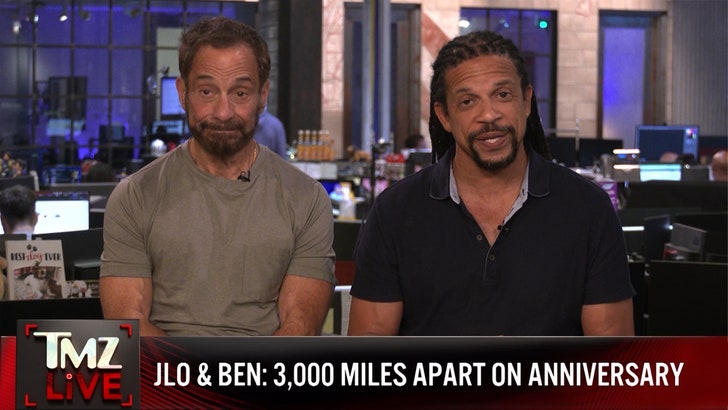
As you know … Ben’s been staying in a Brentwood rental since moving out of the marital Bev Hills mansion, and J Lo’s been spending a lot of time on her own too … first in Europe, and then more recently in New York to celebrate her birthday week.

TMZ Studios
But, get this … Josh says he recently heard Ben was quietly in escrow on something in Brentwood … so BA may not be renting anymore after all — at least that’s what JF’s floating.
As for the Bev Hills mansion — which Ben and Jen paid over $60 million for — Josh explains why Bennifer might not be taking a huge financial hit … although, they definitely ain’t gonna be turning a profit either.
Interesting stuff all around … especially that tidbit about Ben, if it turns out to be right.
Lifestyle
'Wait Wait' for July 27, 2024: With Not My Job guest Kathleen Hanna

Kathleen Hanna of The Julie Ruin performs onstage at the 2016 Panorama NYC Festival – Day 2 at Randall’s Island on July 23, 2016 in New York City. (Photo by Nicholas Hunt/Getty Images)
Nicholas Hunt/Getty Images/Getty Images North America
hide caption
toggle caption
Nicholas Hunt/Getty Images/Getty Images North America
This week’s show was recorded in Chicago with host Peter Sagal, judge and scorekeeper Bill Kurtis, Not My Job guest Kathleen Hanna and panelists Meredith Scardino, Peter Grosz, and Mo Rocca Click the audio link above to hear the whole show.
Who’s Bill This Time
Momala Takes Over; Assigned Seats Are Back; And The Heat Is On
The Olympic Torch Reporch
Our Summer Olympics Preview
Bluff The Listener
Our panelists tell three stories about someone committing an office faux pas, only one of which is true.
Not My Job: We quiz Bikini Kill’s Kathleen Hanna on Hanna-Barbera
Punk icon Kathleen Hanna plays our game called, “Kathleen Hanna Meet Hannah-Barbera.” Three questions about the animation studio.
Panel Questions
Hide Your Receipts; VR Meets ER; Avocado Apologies
Limericks
Bill Kurtis reads three news-related limericks: Situation Room Cocktails; Burrito Bird; Hopped Up Sharks
Lightning Fill In The Blank
All the news we couldn’t fit anywhere else
Predictions
Our panelists predict what will be the big story out of the Paris Olympic Games
-

 World1 week ago
World1 week agoOne dead after car crashes into restaurant in Paris
-

 Midwest1 week ago
Midwest1 week agoMichigan rep posts video response to Stephen Colbert's joke about his RNC speech: 'Touché'
-

 News1 week ago
News1 week agoVideo: Young Republicans on Why Their Party Isn’t Reaching Gen Z (And What They Can Do About It)
-

 Movie Reviews1 week ago
Movie Reviews1 week agoMovie Review: A new generation drives into the storm in rousing ‘Twisters’
-

 Politics1 week ago
Politics1 week agoFox News Politics: The Call is Coming from Inside the House
-

 News1 week ago
News1 week agoVideo: J.D. Vance Accepts Vice-Presidential Nomination
-

 World1 week ago
World1 week agoTrump to take RNC stage for first speech since assassination attempt
-

 News1 week ago
News1 week agoRNC speakers want to separate the president from the person to show softer side of Trump
